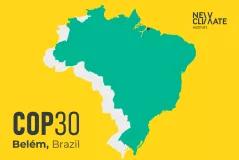We still don’t know exactly what caused the recent widespread power outage across the Iberian Peninsula on April 28th. Investigations are ongoing, and the root cause will likely involve a combination of factors. While we await a full assessment from system operators, the Iberian blackout offers a valuable opportunity for reflection: we must move beyond a fossil-fuel mindset and fundamentally rethink how we understand and manage modern electricity systems, which are undeniably and rapidly changing, driven by renewables and emerging technologies.
Concerns around grid stability in systems with high shares of renewables are valid, but the blackout is not evidence that renewables are inherently unreliable. In fact, renewables were among the first sources that helped restore the system. Regardless of the specific causes of the blackout, it may shed light on a deeper structural problem: our power systems – from planning to operational protocols – are still fundamentally designed for the fossil fuel era and have not yet been fully adapted to the realities of a high-renewables present and future.
The recent blackout should serve as a wake-up call – not just for Spain and Portugal, but globally, NewClimate expert Gustavo De Vivero said. As we move further into a clean energy transition, it’s no longer enough to simply add renewables to existing systems. Renewables are no longer the “new kids on the grid”. They are central to today’s energy systems, and they must be treated as such in how we design, operate and regulate them, he pointed out.
Below, De Vivero responds to some key questions raised by the blackout – and what it tells us about the future of resilient, renewable-based power systems.
Editor’s note: This piece does not attempt to explain or speculate on the causes of the Iberian blackout. A full understanding requires detailed investigation and expertise that goes beyond the scope of this analysis. Instead, this article focuses on what the blackout says about the current state of power systems and the lessons we can learn to build a more resilient energy future.
Q: Can large-scale blackouts like this happen again?
Yes. We are used to highly reliable power systems, which can create the impression that they are simple and infallible. But that’s not the case. Power systems are extremely complex and inherently susceptible to failures. While we cannot eliminate the risk of blackouts entirely, it does not mean they are unavoidable – or that emerging risks cannot be managed.
As we integrate high shares of renewables into the grid, system dynamics shift and the nature of risks also change. To reduce the risk of blackouts, the design, operation and regulation of our power systems need to evolve accordingly. This is not just a local or regional issue. Many countries are experiencing rapid renewable growth, yet their systems are still rooted in outdated, fossil-era paradigms.
Q: Why is renewable energy – and particularly wind and solar – at the centre of the conversation?
What makes this recent blackout notable is that it occurred in two countries that are making significant strides in their energy transition, with high levels of renewable energy. At the time of the event, Spain and Portugal were generating ~70% and ~45% of their electricity, respectively, from solar and wind. Unlike traditional spinning generators (like those in coal, gas or hydropower plants), wind and solar rely on inverter-based technologies that do not contribute to system inertia. Inertia – the kinetic energy stored in large rotating machines – serves as a natural buffer against sudden disturbances, helping to stabilise the grid during events like sudden losses of power or sharp fluctuations in electricity flows.
Inertia has long been considered one of the last technical frontiers in reaching the final stretch – roughly the last 20% – of fully renewable energy systems largely based on solar and wind. As conventional generators, which contribute most of the inertia, are gradually being phased out and replaced by renewables, overall inertia in the grid is declining. That’s why, even though the exact cause of the blackout remains unclear, the role of inertia – and, by extension, the integration of renewable energy – has quickly become a focal point in public and technical debates.
Rather than treating this as a blame game, it should be seen as an opportunity to assess whether our current system design and operational practices are truly prepared for a future dominated by wind and solar power.
Power sector transformation is not something that happens overnight – it takes place through phases, each bringing its own set of challenges that need to be understood to effectively anticipate and prepare the system for the transition. The Iberian Peninsula is already operating in the more advanced phases of renewable integration, where more complex dynamics like grid stability and system interactions begin to surface. While it’s crucial to understand these challenges, it's equally important to note that most countries are still in the early stages of this transition, where these challenges have yet to arise and renewables can continue being deployed with minimal disruption.
Q: Does it mean that the blackout was caused by the lack of inertia?
No – or at least, it is not clear yet. The root cause of the blackout hasn’t been confirmed, and it's likely that no single factor can fully explain what happened. However, in this particular context, it’s reasonable to say that a system with more inertia might have been better equipped to respond to a disturbance. Still, that doesn’t necessarily mean the blackout would have been completely avoided.
Interestingly, inertia may also be connected to another possible piece of the puzzle: inter-area oscillations. Frequency recordings before the blackout showed inter-area oscillations in Spain. This occurs when two regions within a large, interconnected grid – such as the Iberian Peninsula and the rest of Europe – start to oscillate against each other, particularly when a significant amount of power flows through a weak interconnection, like the one between Spain and France. Think of it like two weights connected by a spring: if one side gets disturbed, the other reacts, and both begin to bounce back and forth. Under the right conditions, even a small disturbance – like a power drop or a sudden change in flow caused by a temperature spike – can trigger and amplify these swings. If not dampened, they can escalate into outages.
While inertia can help dampen these oscillations after they begin, here is the twist: Inertia can also make the system more prone to inter-area oscillations if not well distributed across the grid. In other words, it is not just the amount of inertia that matters, but how it is distributed in the interconnected area. Returning to the spring analogy, if one weight is much heavier than the other, the system is more likely to become unstable more easily. In short, while a lack of inertia may not have directly caused the blackout, it’s part of a complex system dynamic that needs to be better understood as we redesign our grids for a renewable-powered present and future.
Q: Are fossil fuel-based systems more reliable?
No. Fossil fuel-based systems have their own set of vulnerabilities. There have been numerous blackouts caused by failures in coal, gas or nuclear plants. When it comes to inter-area oscillations in the context of the energy transition, it is important to understand that they are not unique to renewables. In fact, this kind of oscillating behaviour is an inherent feature of traditional power systems made up of large, spinning machines operating across interconnected grids.
Inter-area oscillations have already caused blackouts in the past, well before renewables were widely deployed. For example, back in 1996, a major blackout hit the western US power grid (WSCC) due to such oscillations, and at that time, wind and solar energy barely existed in the system.
What sets previous blackouts apart is that fossil-based systems were better equipped to manage their associated risks – such as fossil plant failures or fuel shortages. With renewables, the challenges are different: balancing variability, managing excess supply and coordinating more decentralised grid. Our current power systems were not built for that – and have not yet been fully adapted to it; but they can be – and should be – as the energy transition continues.
Q: What does the Iberian blackout reveal about the current state of power systems?
It underscores that some countries are in a critical phase of the energy transition. Spain and Portugal already have high shares of solar and wind. Notably, on April 16, Spain’s mainland grid operated entirely on renewables (wind, solar and hydro) for an entire weekday, making the first for the country.
For decades, experts have recognised that low system inertia is a key technical hurdle in achieving high shares of wind and solar. The good news is that there are already proven technologies and solutions to address this, such as fast frequency response (FFR), synthetic inertia, power system stabilisers (PSS) and advanced grid devices like Flexible AC Transmission System (FACTS). These tools show that we can manage lower-inertia systems effectively.
But the blackout signals a more structural issue: most power systems are still fundamentally designed for centralised, fossil-based generation. While we’ve seen incremental adjustments to bring more renewables online, the core frameworks for planning, dispatching and balancing the grid still largely reflect an obsolete fossil-fuel-based paradigm. This misalignment between outdated system planning and evolving energy realities introduces new vulnerabilities.
To move confidently toward a high-renewables future, we need more than just tweaks – we need a fundamental redesign of our grids and operational and regulatory frameworks to match the dynamics of modern clean energy systems.
Q: What parts of our current power systems do we need to rethink to align with the needs of renewable-based grids?
The obvious – system stress and infrastructure bottlenecks
Operators are increasingly working closer to their limits – not because of renewables per se, but due to aging infrastructure, growing system complexity across vast interconnected grids, rising electricity demand, and congestion, among others. While much attention is placed on expanding renewable generation, investments in storage and grid upgrades have lagged, creating critical bottlenecks. Grids and storage enhance the flexibility needed in high-renewables systems and, with strengthened interconnections, help reduce the risk of inter-area oscillations. Digitalisation could help greatly improve real-time monitoring and responsiveness, but these technologies are still underused. However, if we view the problem solely as an infrastructure gap, we risk overlooking deeper systemic issues.
Planning and grid expansion
The inter-area oscillations observed before the Iberian blackout raise important questions about how we plan and expand our power systems. Replacing traditional fossil-fuel-based power plants with inverter-based renewables fundamentally changes the grid’s structure, or topology. It’s worth asking whether current planning and expansion mechanisms like markets, auctions or centralised planning, truly capture these new dynamics or send the right investment signals. To build a truly renewable-ready grid, we need to move beyond the fossil-era logic and start aligning system expansion with the technical realities of renewable energy.
Some existing practices already integrate emerging challenges into system planning – like co-optimised transmission and generation planning, accounting for stability and flexibility needs, and adaptive approaches that consider uncertainties in technology uptake, electrification and climate impacts. However, as renewable shares grow, system planning must continue to evolve – for example, by integrating dynamic grid topology studies to better identify which areas in the grid are more sensitive to the addition of inverter-based technologies or the retirement of synchronous generators.
System operation
We often value power exchanges and inertia for their ability to respond to imbalances. But as discussed earlier, this is an incomplete perspective in renewable-based systems. Moreover, current system operation is well equipped with protocols to manage under-supply scenarios, such as fossil plant failures, but they are much less prepared to effectively handle excess supply – an increasingly common challenge as wind and solar continue to grow. This mismatch highlights the urgent need to rethink how we operate systems in a renewable-dominated future.
System contingencies and the value of non-served energy
One of the key questions raised by the blackout is how we value unserved energy in increasingly electrified economies. As more sectors – from transport to heating – switch to electricity, the consequences of power outages become more severe. Electrification, if done smartly, can actually enhance system security and reliability. This requires updates in regulation and operational protocols. More importantly, we need to rigorously reassess the true cost of unserved energy in this new context, as this has major implications on where and how much to invest in adaptive protection measures, grid infrastructure and storage.
Centralisation vs. decentralisation
Another issue is the over-centralisation of operations and dispatch. For instance, the Iberian market clearing is governed by a pan-European algorithm. While this supports broader market integration, it limits flexibility at the national and sub-national levels (e.g. within the Iberian Peninsula). As renewable deployment grows, enabling more decentralised and autonomous operations within smaller regions will become increasingly important to ensure grid resilience.
Market design and investment signals
Then there’s the market design and incentives that are still largely rooted in fossil fuel economics. Most power markets are well equipped with mechanisms to hedge against short-term fuel price volatility, but they often lack adequate long-term incentives to ensure the financial viability of renewables. As a result, despite being cost-competitive, renewable energy sources can be less profitable and less attractive to investors.
Q: So what is the real takeaway from this blackout?
We cannot continue managing modern power systems with outdated thinking. This blackout serves as a reminder that our system design, operations, planning and market rules are still misaligned with the realities of high-renewable systems.
The real risk lies in continuing to apply outdated solutions to today’s energy challenges. We need to gradually disconnect from fossil fuel-based frameworks and embrace the new paradigms required for modern renewable-based systems. The energy transition is no longer optional – it is essential and must be central to our energy systems. It is time to design and operate our power infrastructure accordingly, to build a more forward-looking, stable, resilient and decarbonised energy future.
Written by Hyunju (Laeticia) Ock, writer and editor at NewClimate Institute.





